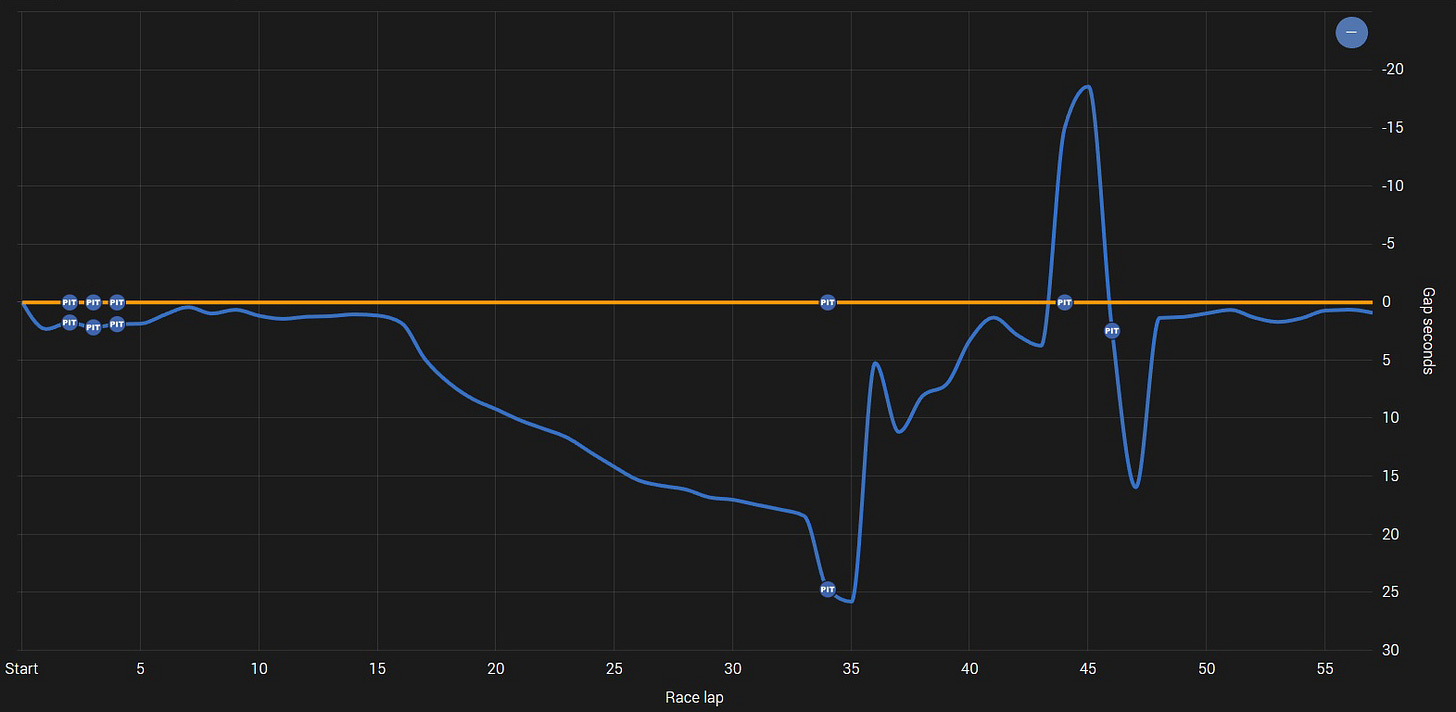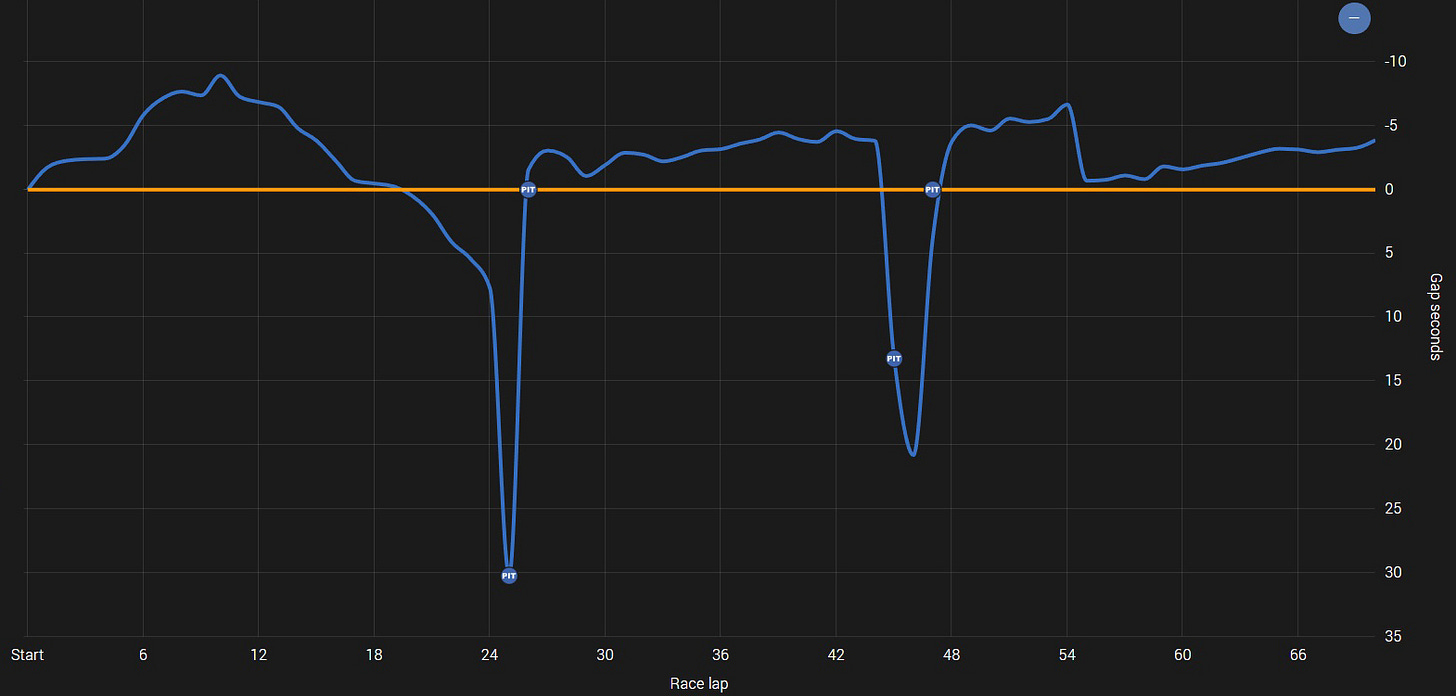The 2025 Formula 1 season just kicked off this past Sunday in Australia, and it is safe to say it did so with a bang. The drama and daring overtakes, combined with mistakes, crashes, and the chaos that often accompanies changeable conditions, provided us with an exciting spectacle.
To the victor go the spoils, and Lando Norris, having won the race with Max Verstappen finishing as the runner-up, leads the championship for the first time in his career. The McLaren driver has ample reasons to view the future through rose-tinted glasses, as the Australian Grand Prix demonstrated a significant advantage his car holds over the competition: low intermediate tire degradation on a drying, consistently improving track.
Degradation? Never Heard of It
Verstappen was able to keep pace with Norris for the first 16 laps of the race and even applied some pressure on his rival. However, once his intermediate tires began to go off and the track conditions improved, he started to immidiately lose ground to the McLaren, as illustrated in the graph below.

On lap 16, just before the Dutchman went too deep in Turn 13 and lost the 2nd place to Oscar Piastri, he was trailing Norris by 1.767 seconds. By lap 33, prior to both drivers pitting, the gap had increased to 18.386 seconds. This situation was not unique to Norris; his teammate closely followed him, and the Red Bull quickly vanished from Piastri’s mirrors.
And it’s not as if Verstappen completely destroyed his set of intermediate tires. During the same 17-lap period, George Russell, who was running in P4, lost 4 seconds to the Red Bull driver, despite briefly closing the gap on the Dutchman. On lap 16, they were separated by 10.860 seconds, by 7.987 seconds on lap 26, and by 14.975 seconds on lap 33.
While others struggled, the McLarens enjoyed a smooth ride, as if the cars had a built-in immunity to degradation.
I’ve Seen This Film Before
The season opener in Melbourne wasn’t the first instance of the events described above. Last year in Canada we witnessed a similar occurrence.
The race had a similar first phase to the Australian Grand Prix, with a wet start followed by improving conditions. Just like on Sunday, the McLarens reigned supreme on a drying track.

On lap 10, Verstappen held an 8.936-second advantage over Norris he had built when the conditions had been at their worst. However, this lead quickly evaporated and the Brit overtook his friend and foe 10 laps later, establishing a 7.721-second cushion before the first round of pit stops on lap 24.
And once again, it wasn't just Norris. During the same 14-lap period, Piastri closed the gap to Verstappen from 14.114 seconds to just 1.745.
You Degrade Tires, I Degrade Your Morale
Helmut Marko said that it should’ve rained more for Red Bull to have a shot at victory in Melbourne, because their degradation was too strong. He’s right.
It looks like, when a damp track improves and degradation takes its toll on inters, not even Verstappen can keep pace with the McLarens.




